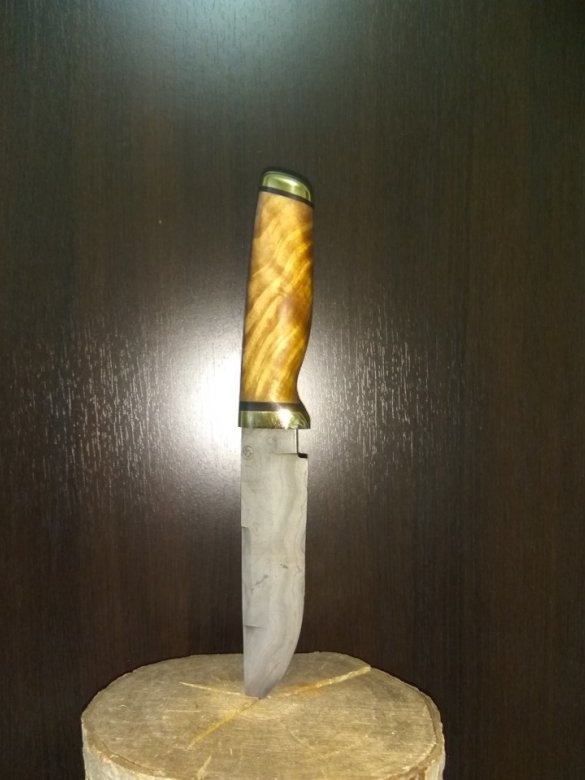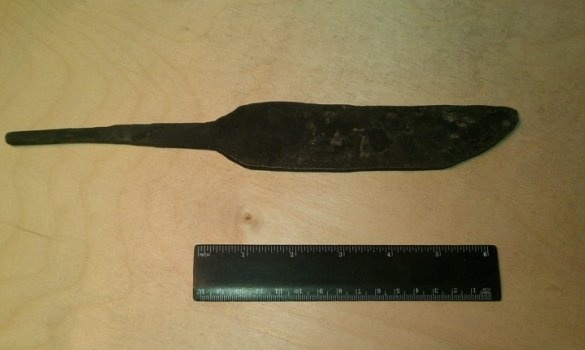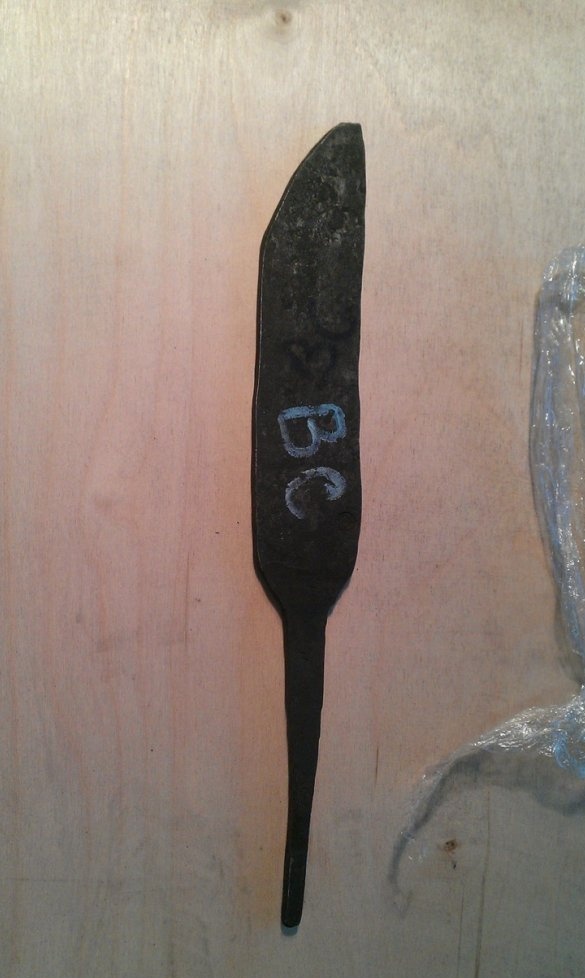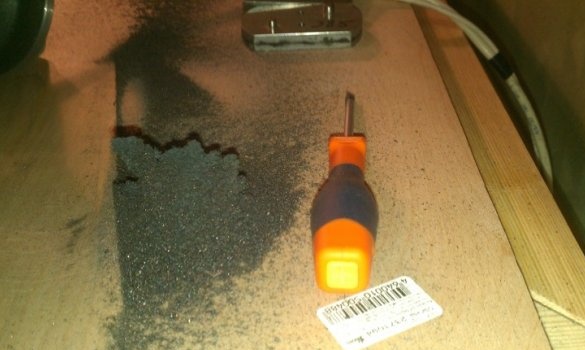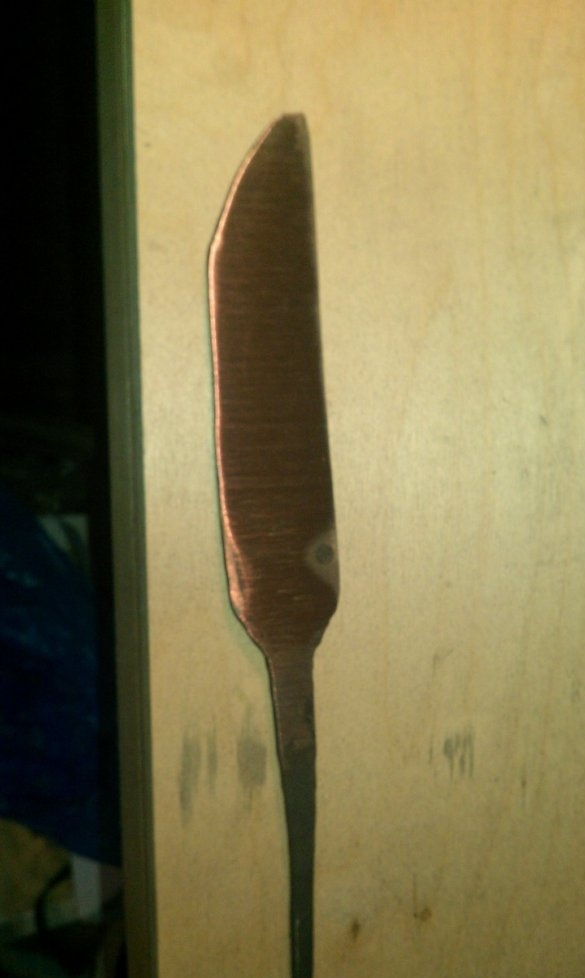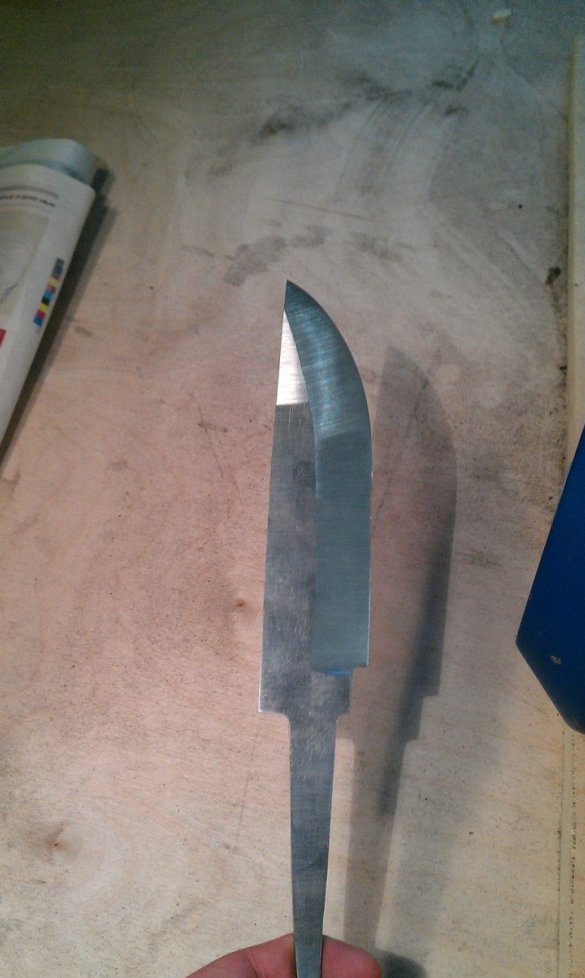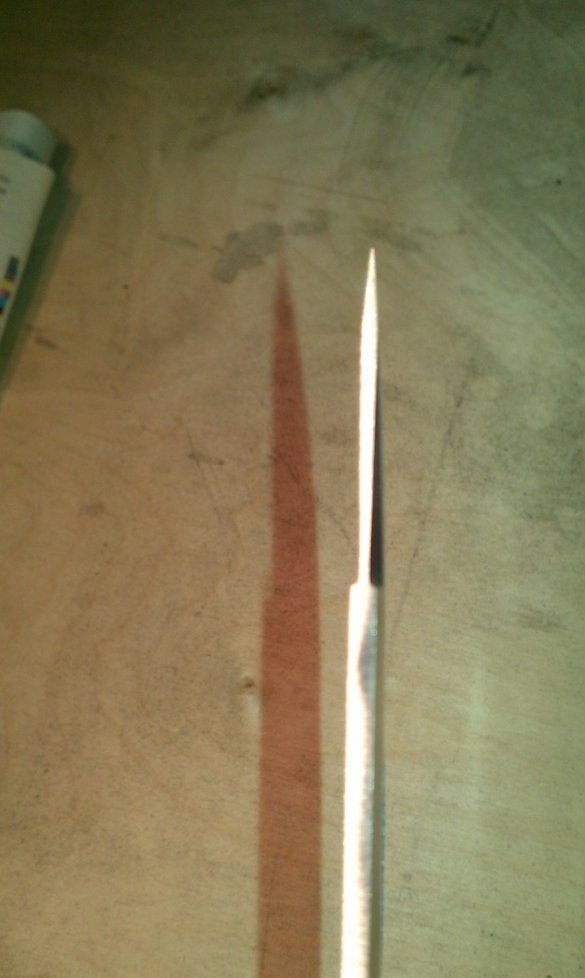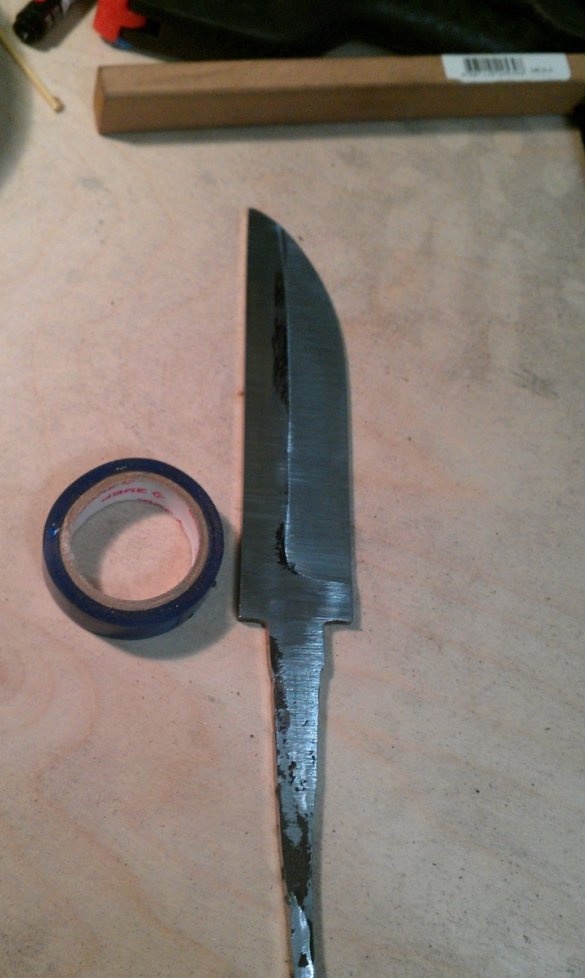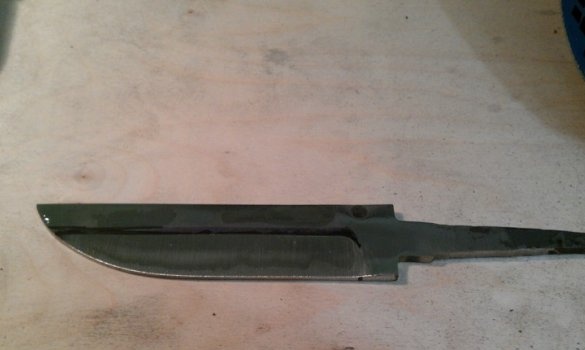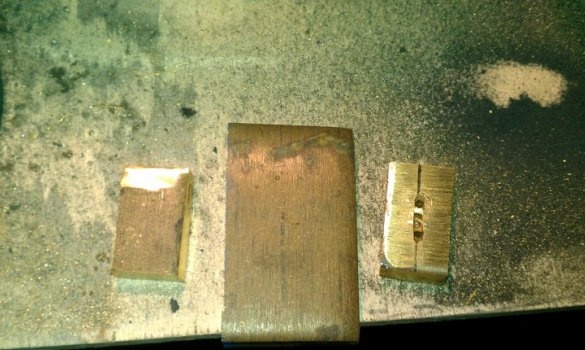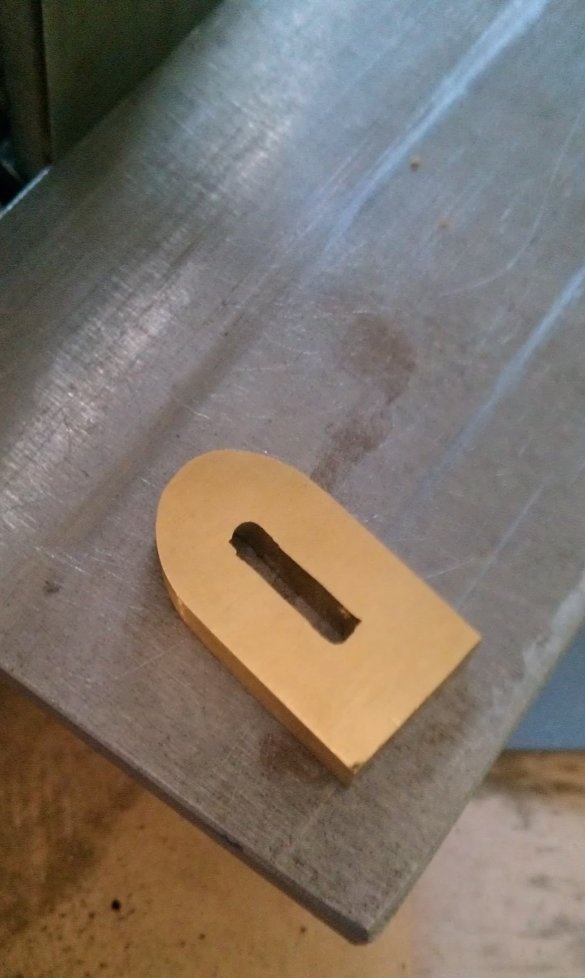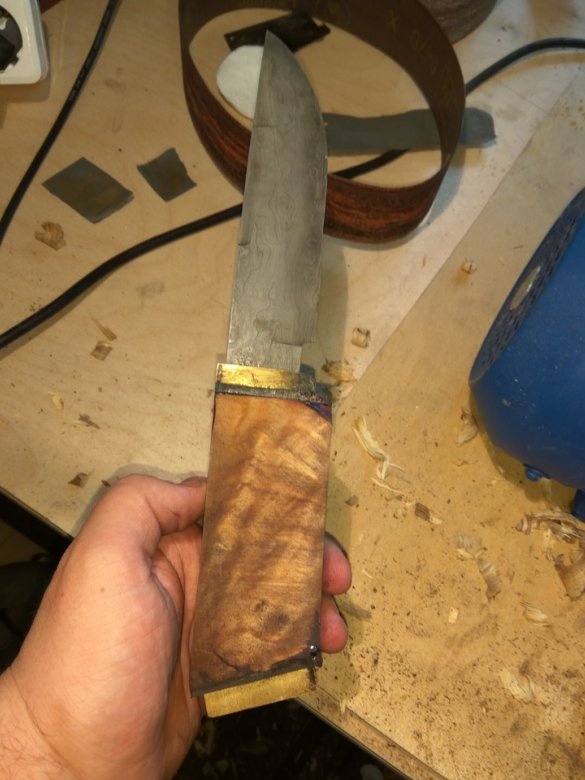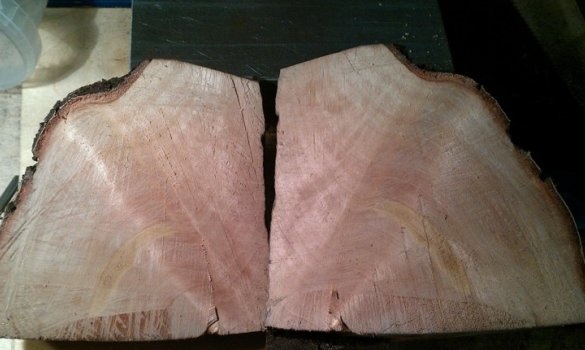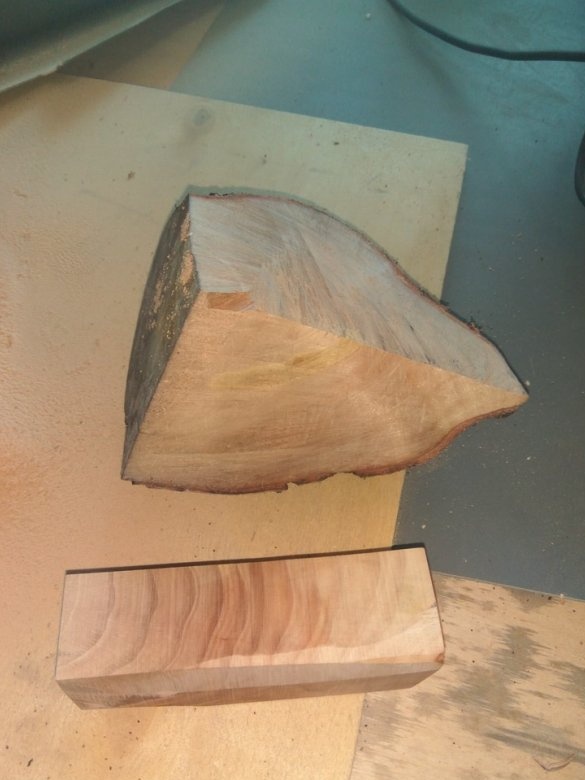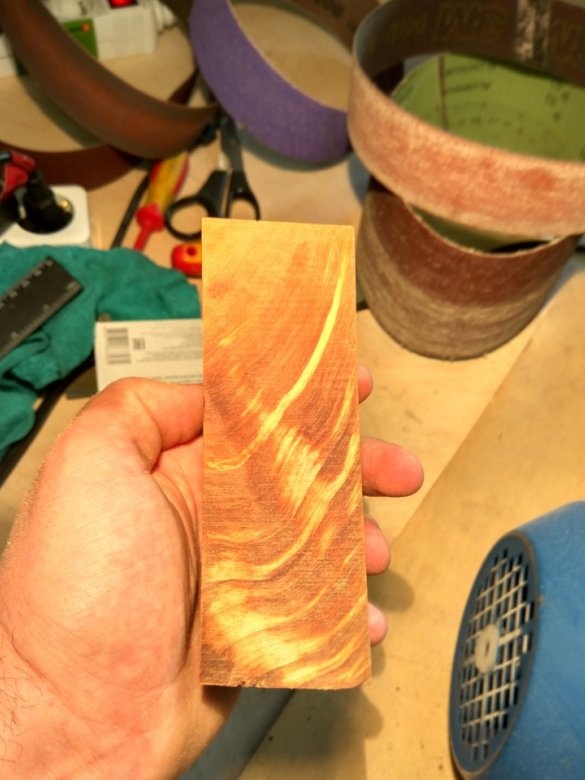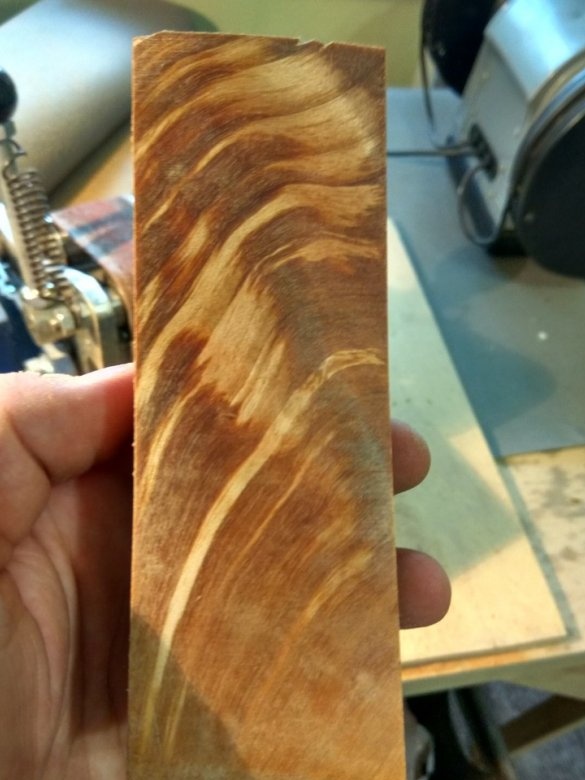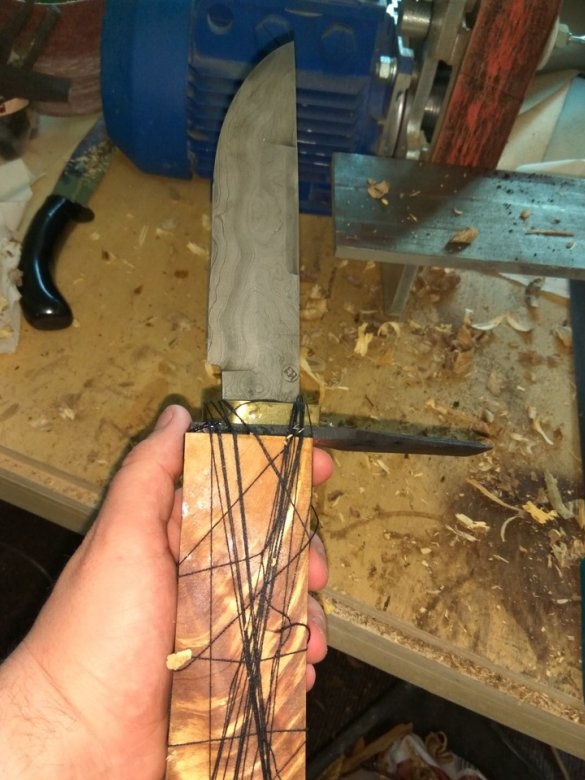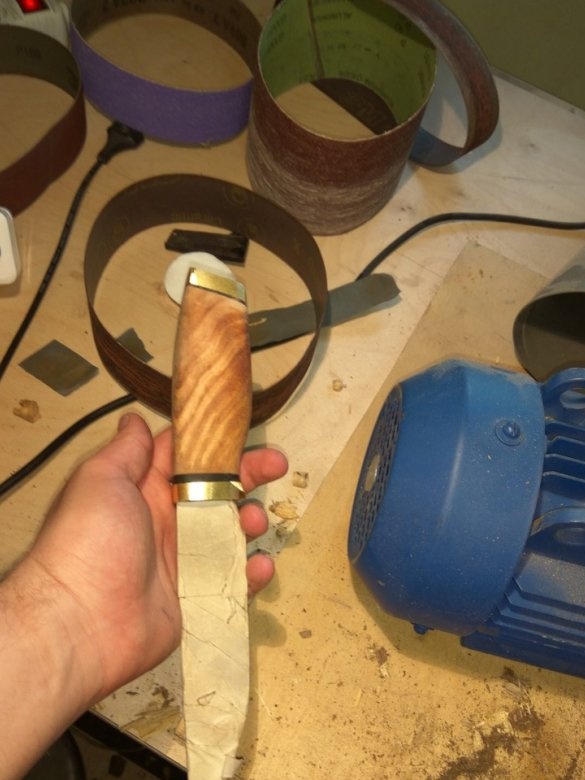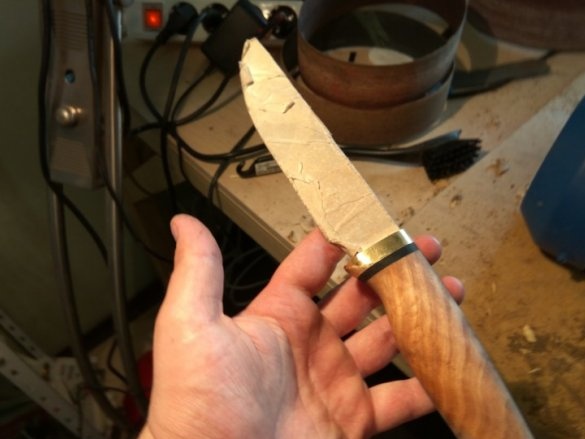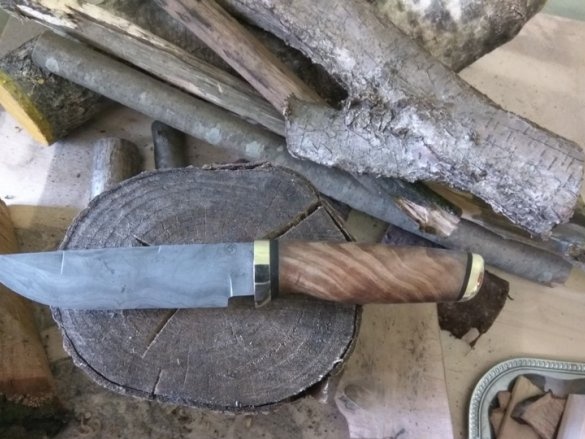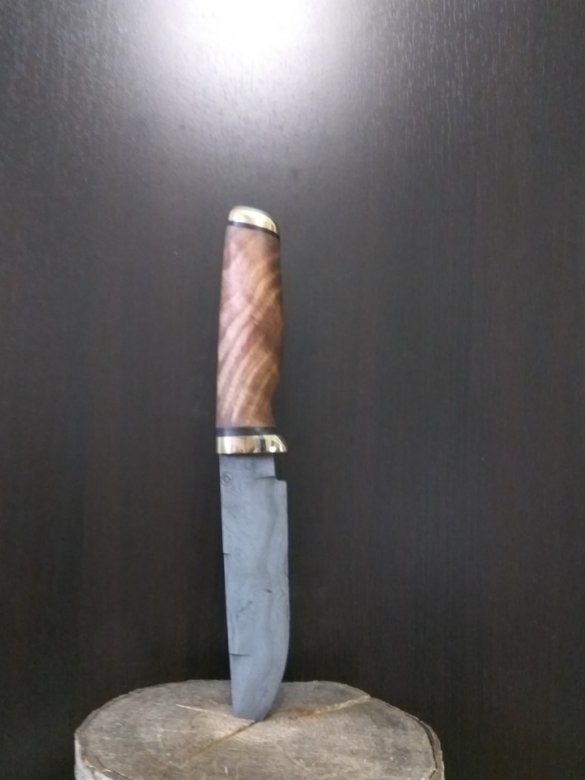Hello everybody. Today I want to show you a beautiful work - this is a knife from Damascus steel. Nowadays, almost all steel is called Damascus steel, which has some kind of pattern. The package may contain various low-grade metals and such a knife for beauty.
In ancient times, craftsmen made blades from a lot of layers, up to 5000 layers, not knowing the steel grades, and the final product was very strong, beautiful. Yes, and in our time there are masters who make good knives, but their units and even biting prices.
And so I proceed to the review. The author, once at a fair bought a forging from ladies with a steel mask, a master from Chelyabinsk assured that there were a thousand layers.
Need a tool
- Bulgarian
- Grinder
- Birch cap
- Impregnation oil
Here is the knife blank. The author polishes the workpiece on the grinder. Thickness 6mm, the author grinds to the desired thickness. And proceeds to the derivation of the slopes
Now the Author proceeds to the guard and for this we cut the necessary piece out of brass and drilled everything in the right place. Further, the author etches the blade in acid.
For the pen, the author took a pre-prepared cap of birch, boiled in salt water. The author cuts the desired piece from the mouthpiece, and drills a hole in the center with all the guards, we try everything in its place, after everyone has fitted it. The author cooks a couple of hours of mouthpiece in linseed oil to highlight the structure of the tree and improve its characteristics. For bolster, the author applied a piece of brass with spacers of bog hornbeam. Now the author sheds everything with epoxy glue, and binds with capron leaves to dry for 24 hours
Now the author proceeds to grinding the desired shape of the handle. The author’s knife shape was arbitrary. A cap of birch is very well grinded on a grinder and a beautiful tree pattern is combined with a damask pattern. After polishing, the author polishes the brass with goy paste and rubs the cap with a cloth.
Well, that’s it. The result is a beautiful sturdy knife. It is a pity, of course, that the author himself did not weld a package of damask, it would be interesting to see. For almost a month now I myself have been doing one knife from Damascus, I somehow bought good metal, but I don’t want to spoil it while I train on cheap metal, there is already progress, it’s very hard to forge Damascus by hand, but I don’t give up somehow in the ancient times have forged.
I tried different fluxes and sand with soda and different types of borax, then on the advice of a friend I tried with crushed cast iron - it is very difficult, but the result is worth it.Still there would be a good teacher in the district - there are none, but it is a pity I really wanted to be a student, well, I will achieve something by trial and error, if I do not disappoint.
Well, while I am studying from the lesson of Arkhangelsk Leonid, a very good master is a pity that we do not live in one country, I really hope that I will see him at least once in my life and visit his forge, let it be my New Year's wish.
In general, how everything will be ready, I will definitely share with you friends.
Happy New Year, friends, I wish you good health and good luck in your life!
Happy new year 2020 !!!
Thanks to the author for his work, I hope you liked the knife and my article, until new homemade friends.

